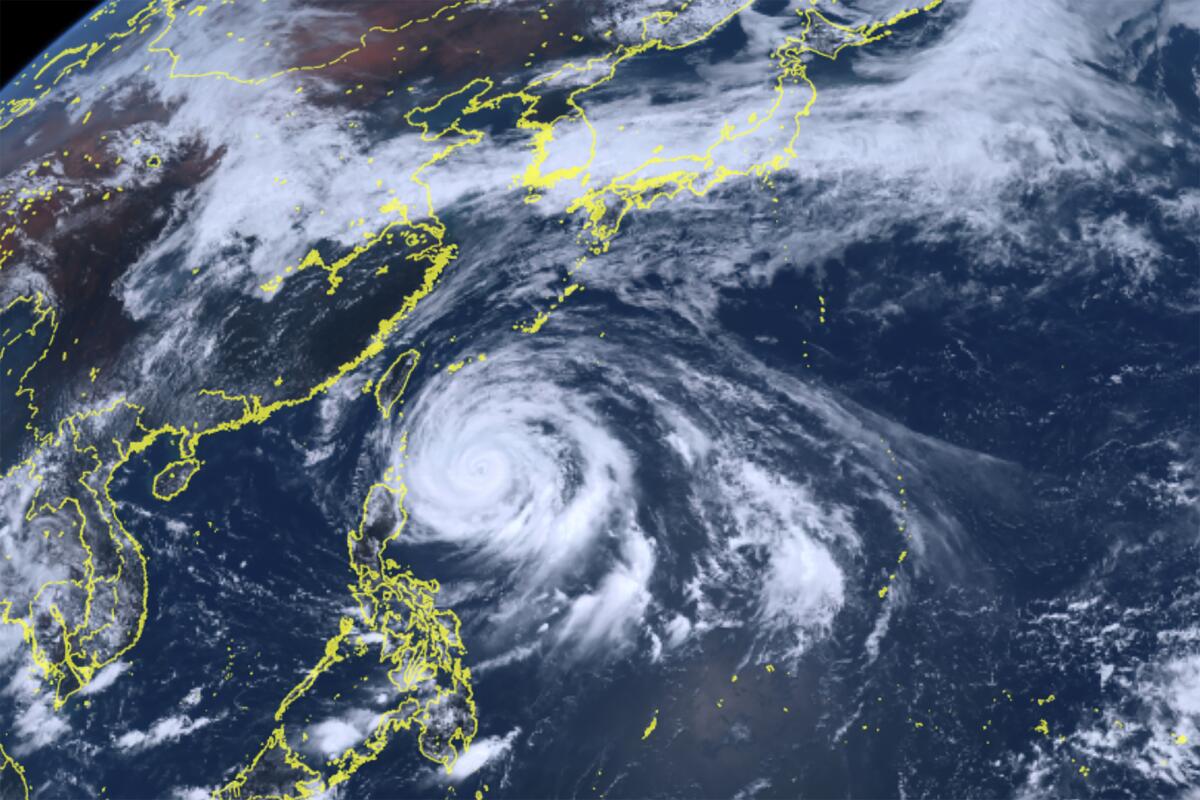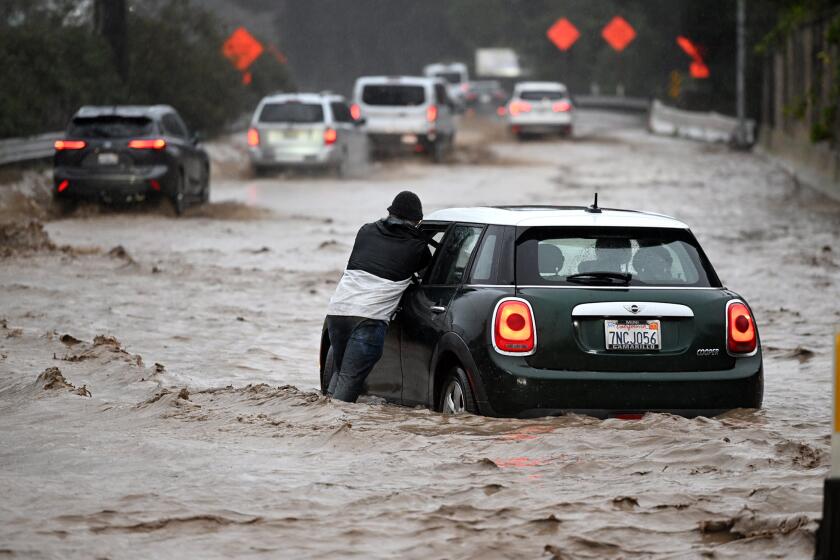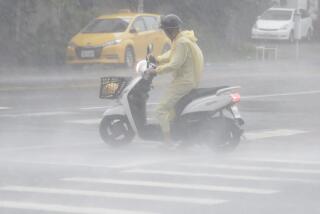Thousands evacuated in Philippines amid warnings of floods, landslides from Typhoon Mawar

MANILA — Philippine officials evacuated thousands of villagers, shut down schools and offices and imposed a no-sail ban Monday as Typhoon Mawar approached the country’s northern provinces a week after battering the U.S. territory of Guam.
The typhoon is packing maximum sustained winds of 96 mph and gusts of up to 118 mph but is forecast to spare the mountainous region a direct hit. Current projections show the typhoon veering northeast toward Taiwan or southern Japan.
Although it’s expected to slow down considerably, authorities warned of dangerous tidal surges, flash floods and landslides as it blows past the northernmost province of Batanes from Tuesday to Wednesday. Disaster-preparedness officials said that the typhoon’s course could change abruptly and that there was no room for complacency.
“Even if the sun is up, the weather is so unpredictable nowadays and could change anytime so we should always stay on the side of safety,” Assistant Secretary Raffy Alejandro of the Office of Civil Defense said. “We’re talking here of potential threats to lives.”
Mawar tore through Guam last week as the strongest typhoon to hit the remote U.S. Pacific territory in more than two decades, flipping cars, tearing off roofs and knocking out power.
“These typhoons, earthquakes and natural calamities have been a part of our lives,” Batanes Vice Gov. Ignacio Villa told the Associated Press by telephone. “We cannot afford not to prepare because that would potentially mean the loss of lives and major damage.”
A new study by a scientist with the National Oceanic and Atmospheric Administration has found that over the past seven decades, tropical cyclones have slowed down near coastlines around the world.
Army troops, police, firefighters and volunteer groups were standing by for search-and-rescue operations in northern provinces, and more than 1 million food packs have been prepared for any contingency, officials said.
More than 4,800 people have been evacuated to emergency shelters in Cagayan, Batanes and other provinces, Alejandro said. He added that the number of people displaced was expected to rise given the precautionary evacuations underway Monday in flood- and landslide-prone regions.
Classes and office work, except those involved in disaster preparedness, have been suspended in most of Cagayan and Batanes provinces, where occasional downpours and gusty wind were reported Sunday night. Flights to and from the provinces have been canceled and fishing and passenger vessels prohibited from sailing.
In at least one province, officials imposed a liquor ban.
A strong El Niño could augur yet another wet winter for California, as well as drive the global average temperature to a record high, experts say.
Villa said the local government lent ropes to villagers living in high-risk communities to strengthen their houses as the typhoon approached.
About 20 typhoons and storms each year batter the Philippine archipelago, which also lies on seismic faults where volcanic eruptions and earthquakes occur, making the Southeast Asian nation one of the world’s most prone to natural disasters.
In November 2013, Typhoon Haiyan left more than 7,300 people dead or missing, flattened entire villages, swept ships inland, demolished about a million shanties and houses and displaced more than 5 million people in one of the country’s poorest regions in the central Philippines.
More to Read
Sign up for Essential California
The most important California stories and recommendations in your inbox every morning.
You may occasionally receive promotional content from the Los Angeles Times.











